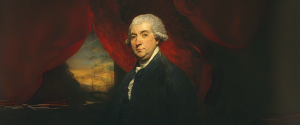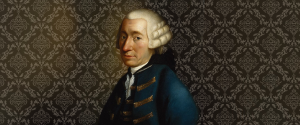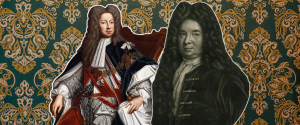London’s coffeehouse culture and its commerce were intrinsically linked. During the 18th century a new active culture evolved. Coffeehouses sprang up all over London and attracted a variety of patrons with a head for business. The crowd at coffeehouses included doctors, merchants, writers and politicians.
Over two-thousand coffee houses existed in London by the closing of the seventeenth century. Here are some of London’s prominent coffeehouses in the 18th century that we didn’t have time to mention in our podcast:
Will’s – Covent Garden
Will’s was indisputably the most famous coffeehouse of the century. It was owned by William Urwin and situated in one of the most stylish parts of London on Russell Street in Covent Garden. One of the reasons for the popularity of this particular coffee house was its regular visits from John Dryden the English poet and dramatist Ellis. Dryden sat at a principal table when he went to Will’s and was rarely approached by younger gentleman who thought it a privilege to get a pinch from his snuff-box. Instead of sitting in boxes, which became popular later one in the century, men gathered at tables set up around the room. Smoking was accessible and fashionable at the time.
The Grecian – Fleet Street
The Grecian was situated in Devereux Court and was known as a meeting place for the “Learned Club” and people “adjacent to the law”. The Deveraux pub now stands on the spot. A famous violent incident occurred at this coffeehouse when an argument over the pronunciation of a particular Greek word resulted in a horrible fight. One man even ran his sword through the door. Another source indicates that the Grecian was also a place where men could pick up prostitutes in the dark alleyways, not sure what made this different from any other establishment frequented by men in the 18th century.
The Turk’s Head – Gerrard Street, Westminster
The Turk’s Head coffeehouse bore the same name as numerous coffee houses and clubs. The one located in Westminster was known for the debates that were held inside. Groups of people would come to discuss politics, literature, and many other controversial topics. Another coffee house known as the Turk’s Head sold what seems to be gourmet coffees of the time, chocolate and tea. There is a now a Westminster Council plaque on the side of a Chinese Supermarket.
The Rainbow – Fleet Street
The Rainbow set up on Fleet street around 1652 was most likely the second coffee house in the city of London. Its owner, James Farr had been a mere barber before successfully opening and his neighbours seemed disturbed to see his rise to fortune. This coffeehouse contained a bay window where the older gentleman where known to sit and had a large dining room. Learn more about how the coffeehouses influenced the culture of London in the 18th century in our London History Podcast Episode 11: London’s Coffeehouses and Commerce.



